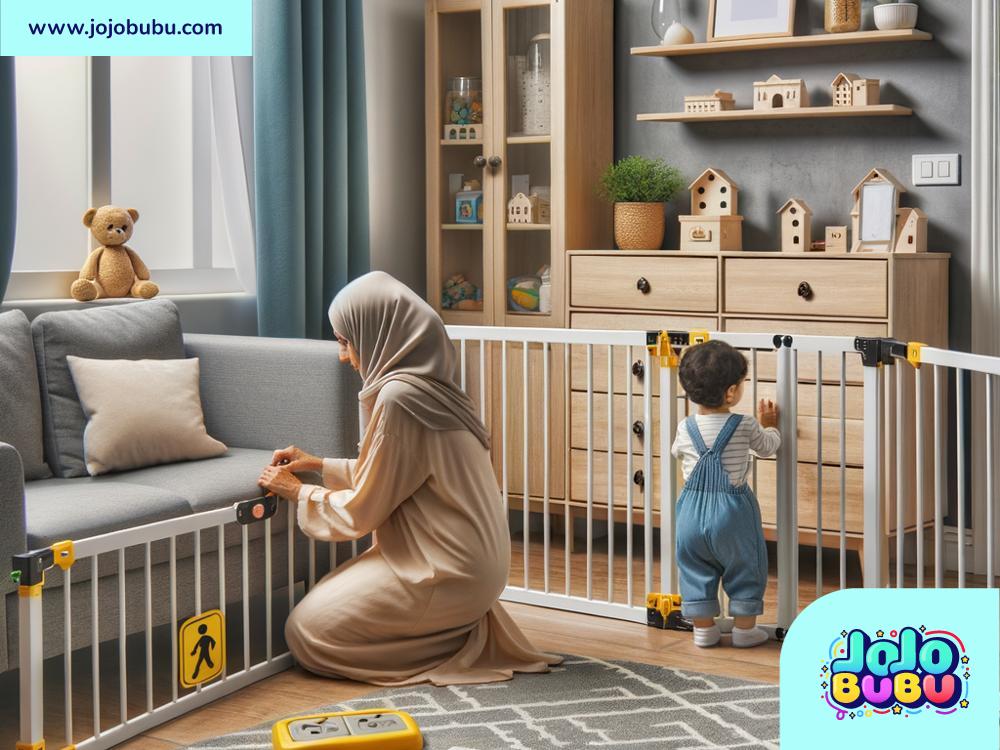Childproofing Your Home for Grandchildren: A Complete Guide
Welcoming your grandchildren into your home is always a joyful experience. You cherish their laughter, hugs, and playful energy. However, it's important to ensure their safety while they're with you. Curious toddlers and energetic children can unintentionally hurt themselves if your house isn’t childproof. By taking a few simple steps, you can create a safer environment for your little loved ones to explore and enjoy. Here’s a helpful guide on how to childproof your home in easy-to-understand steps.
Why Childproofing Matters
Children, especially those under five years old, are naturally curious. They want to touch, taste, climb, and explore everything within their reach. While this curiosity is important for their development, it can put them at risk for accidents such as falls, burns, choking, or poisoning. Your home may feel perfectly safe to adults, but for small children, things like electrical outlets, sharp corners, and cleaning supplies can become serious hazards. Childproofing helps reduce these risks and provides a secure space for them to play and grow.
Start with a Child’s Perspective
Before you start childproofing, try to see the world from your grandchild’s point of view. Get down on your hands and knees and look around your home. This will help you identify potential dangers that you might overlook from your regular adult height. Items or areas you never considered hazardous could suddenly become obvious.
Room-by-Room Childproofing Tips
Living Room
The living room is a hub of activity. Here’s how you can make it safer:
- Cover electrical outlets: Insert outlet covers or secure outlet plates to keep tiny fingers from poking into sockets.
- Anchor large furniture: Bookshelves, TVs, and dressers can tip over if climbed. Secure them to walls with anti-tip straps or brackets.
- Protect sharp edges: Coffee tables and other furniture with sharp corners should be covered with soft corner guards to prevent injuries.
- Adjust window cords: Loop cords or use cord winders to prevent choking or strangulation hazards.
Kitchen
The kitchen can be particularly dangerous for small children because of appliances, hot surfaces, and sharp tools. Take these precautions:
- Lock cabinets and drawers: Use childproof locks or latches on cabinets to keep children away from cleaning supplies, knives, and other potentially harmful items.
- Secure the stove: Use stove knob covers to prevent children from accidentally turning on burners. Install a stove guard to keep little hands away from hot surfaces.
- Keep small items out of reach: Food wrappers, coins, and utensils can be choking hazards. Place them on higher shelves or counters.
- Store chemicals safely: Cleaning products, detergents, and medicines should be stored in high cabinets or locked drawers.
Bathroom
Bathrooms can be a minefield of risks for young children. Here’s how to make them safer:
- Install toilet locks: Prevent toddlers from lifting the toilet lid, which can pose drowning risks.
- Use slip-resistant mats: Place non-slip mats in the bathtub to prevent slipping during bath time.
- Store medications safely: Keep all medicines, shampoos, and personal care items in locked cabinets.
- Control water temperature: Install anti-scald devices on your faucets to avoid burns from hot water.
Bedroom
Bedrooms may feel safer, but they're not without hazards. Here's what you can do:
- Crib safety: If your grandchildren sleep in a crib, make sure it meets current safety standards. Avoid using loose blankets or pillows, which can pose suffocation risks.
- Secure cords: Keep cords from blinds, lamps, and electronics out of reach.
- Remove small objects: Jewelry, coins, and batteries can be choking hazards, so remove them from surfaces within the child’s reach.
Stairs
If your house has stairs, children may try to climb up or down them, which can lead to falls. Use these precautions:
- Install safety gates: Place gates at the top and bottom of stairs to block entry. Make sure the gates are approved for use with children.
- Carpet steps: Install carpeting or non-slip treads on stairs to reduce the chance of slipping.
General Safety Tips for the Whole House
- Use door knob covers: These help prevent children from opening doors to unsafe areas, like kitchens, basements, or outdoor spaces.
- Secure cords and plugs: Bundle and hide electrical cords so they don’t become tripping hazards.
- Remove breakable items: Glass vases, picture frames, and other fragile objects should be placed on high shelves or in storage.
- Install smoke and carbon monoxide detectors: Make sure your detectors are working properly to protect your home and your grandchildren.
Constant Vigilance Is Key
Keep in mind that childproofing isn’t a one-time activity. Kids grow quickly, and what was safe for your crawling grandchild might not be safe for your active toddler two months later. Regularly assess your home for hazards and update your measures as needed.
Enjoy Peace of Mind
Once your home is properly childproofed, you can relax and focus on enjoying your time with your grandchildren. Play games, exchange hugs, and create loving memories without worrying about their safety. Childproofing is a loving act that ensures your home is a welcoming, secure haven for your grandchildren—and gives you peace of mind as a grandparent.
By following the steps in this guide, you can transform your home into a safe place where your grandchildren can explore, learn, and thrive. Safety isn’t just about preventing accidents—it’s also about showing love and care for the little members of your family!

